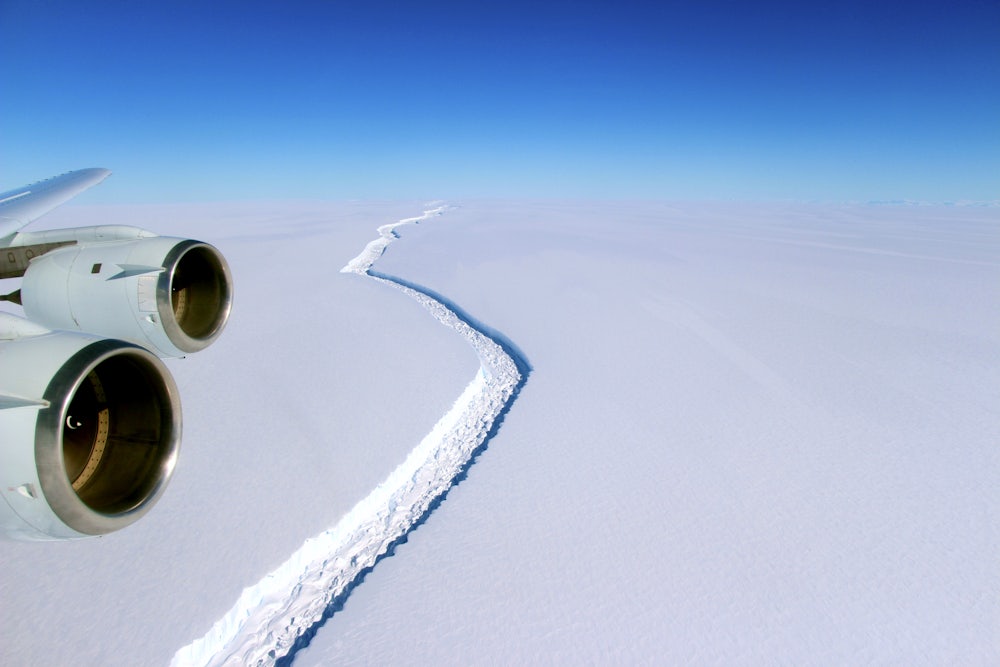Trump administration officials reportedly will make a decision this week on whether the U.S. will remain in the Paris Agreement, the international climate accord to keep global warming at manageable levels. Meanwhile, we’re only halfway through April, and already this month has been a doozy when it comes to research on the future of our planet. A sampling:
- As the planet warms, permafrost may thaw about 20 percent faster than we previously thought. This is scary not only because people live on this frozen soil, but because it’s chock-full of carbon—meaning as it thaws, it releases more greenhouse gases, creating an irreversible feedback loop of warming and thaw.
- The Great Barrier Reef has suffered two consecutive mass bleaching events, according to new aerial surveys. The back-to-back bleaching events—caused primarily by warmer oceans due to climate change—put the reef in its “final terminal stage,” one scientist said.
- It turns out Greenland’s largest glacier is “even more vulnerable to sustained ice losses than previously thought,” increasing the risk of sea level rise.
- Another large Greenland glacier has an enormous, mysterious crack in it.
- If we continue on our current path of fossil fuel burning without reducing emissions, “by mid-century humans will be causing the fastest climate change in approximately 50 million years.”
- This past March was the second-hottest March ever recorded.
- Scary in a different way: Climate change could make airplane turbulence worse due to “changes in the jet stream over the North Atlantic flight corridor.”
Most of these worst-case scenarios will only occur if humans continue emitting carbon dioxide at our current rate, rather than working together to steadily reduce greenhouse emissions. But Trump may cancel our Paris commitments, just he’s trying to do to research on global warming. Some of the above findings were made possible by the federal government; NASA, for example, captured the first photos of the Greenland ice sheet crack. But Trump has proposed cutting most climate and earth science research from the federal budget.
